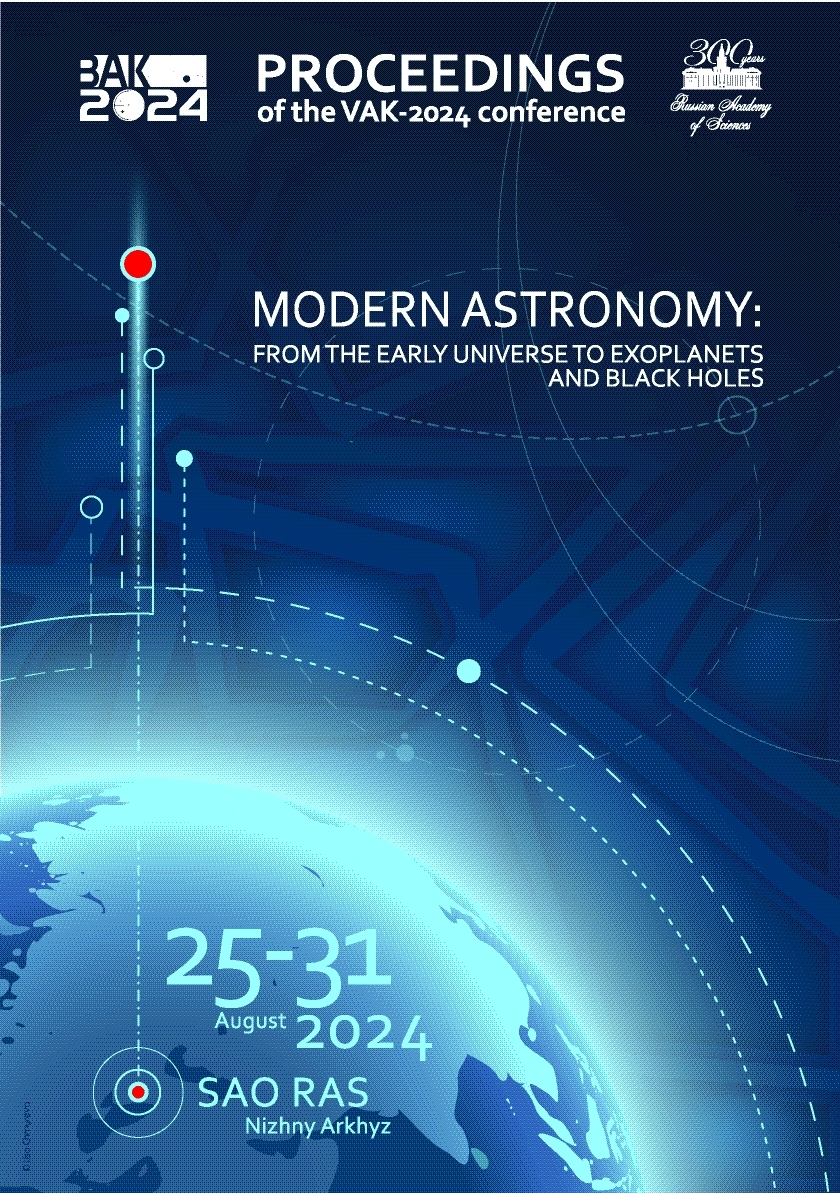Institute of Astronomy of the Russian Academy of Sciences
Institute of Astronomy of the Russian Academy of Sciences
УДК 53 Физика
УДК 520 Инструменты, приборы и методы астрономических наблюдений, измерений и анализа
УДК 521 Теоретическая астрономия. Небесная механика. Фундаментальная астрономия. Теория динамической и позиционной астрономии
УДК 523 Солнечная система
УДК 524 Звезды и звездные системы. Вселенная Солнце и Солнечная система
УДК 52-1 Метод изучения
УДК 52-6 Излучение и связанные с ним процессы
ГРНТИ 41.00 АСТРОНОМИЯ
ГРНТИ 29.35 Радиофизика. Физические основы электроники
ГРНТИ 29.31 Оптика
ГРНТИ 29.33 Лазерная физика
ГРНТИ 29.27 Физика плазмы
ГРНТИ 29.05 Физика элементарных частиц. Теория полей. Физика высоких энергий
ОКСО 03.06.01 Физика и астрономия
ОКСО 03.05.01 Астрономия
ОКСО 03.04.03 Радиофизика
ББК 2 ЕСТЕСТВЕННЫЕ НАУКИ
ББК 223 Физика
ТБК 614 Астрономия
ТБК 6135 Оптика
BISAC SCI004000 Astronomy
BISAC SCI005000 Physics / Astrophysics
The paper presents the results of modeling the absorption spectrum in the H$\alpha$ and He 10830 Å lines for the hot Jupiter HAT-P-32 b. The simulation was carried out using a 3D hydrodynamic model coupled to a Monte Carlo model of Ly$\alpha$ photon transfer. It was determined that to explain the absorption in both lines at a ratio ${\rm H}/{\rm He}=99/1$, high values of the XUV flux and stellar Ly$\alpha$ flux are required: $F_{\rm XUV}=100$ erg cm$^{-2}$ s$^{-1}$ and $I_{\rm Ly\alpha}=600$ erg cm$^{-2}$ s$^{-1}$, which may indicate high activity of the star. New parameters were also found that describe the absorption at ${\rm H}/{\rm He}=97/3$ while requiring less extreme $F_{\rm XUV}=25$ erg cm$^{-2}$ s$^{-1}$ and $I_{\rm Ly\alpha}=600$ erg cm$^{-2}$ s$^{-1}$. Monte Carlo modeling showed that the absorption in the H$\alpha$ line is formed by stellar photons producing H(2) concentrations at a level of $10^2$–$10^3$ cm$^{-3}$ in the atmospheric layer up to $2R_{\rm p}$, where the absorption occurs.
planets and satellites: atmospheres; radiative transfer; scattering; hydrodynamics
1. Czesla S., Lampon M., Sanz-Forcada J., et al., 2022, Astronomy & Astrophysics, 657, id. A6
2. Linsky J.L., France K., Ayres T., 2013, Astrophysical Journal, 766, 2, id. A69
3. Miroshnichenko I.B., Shaikhislamov I.F., Berezutskii A.G., et al., 2021, Astronomy Reports, 65, p. 61
4. Shaikhislamov I.F., Khodachenko M.L., Lammer H., et al., 2020, Monthly Notices of the Royal Astronomical Society, 491, p. 3435
5. Yan D., Guo J., Seon K., et al., 2024, Astronomy and Astrophysics, 686, id. A208
6. Zhang Z., Morley C.V., Gully-Santiago M., et al., 2023, Science Advances, 9, id. eadf8736







